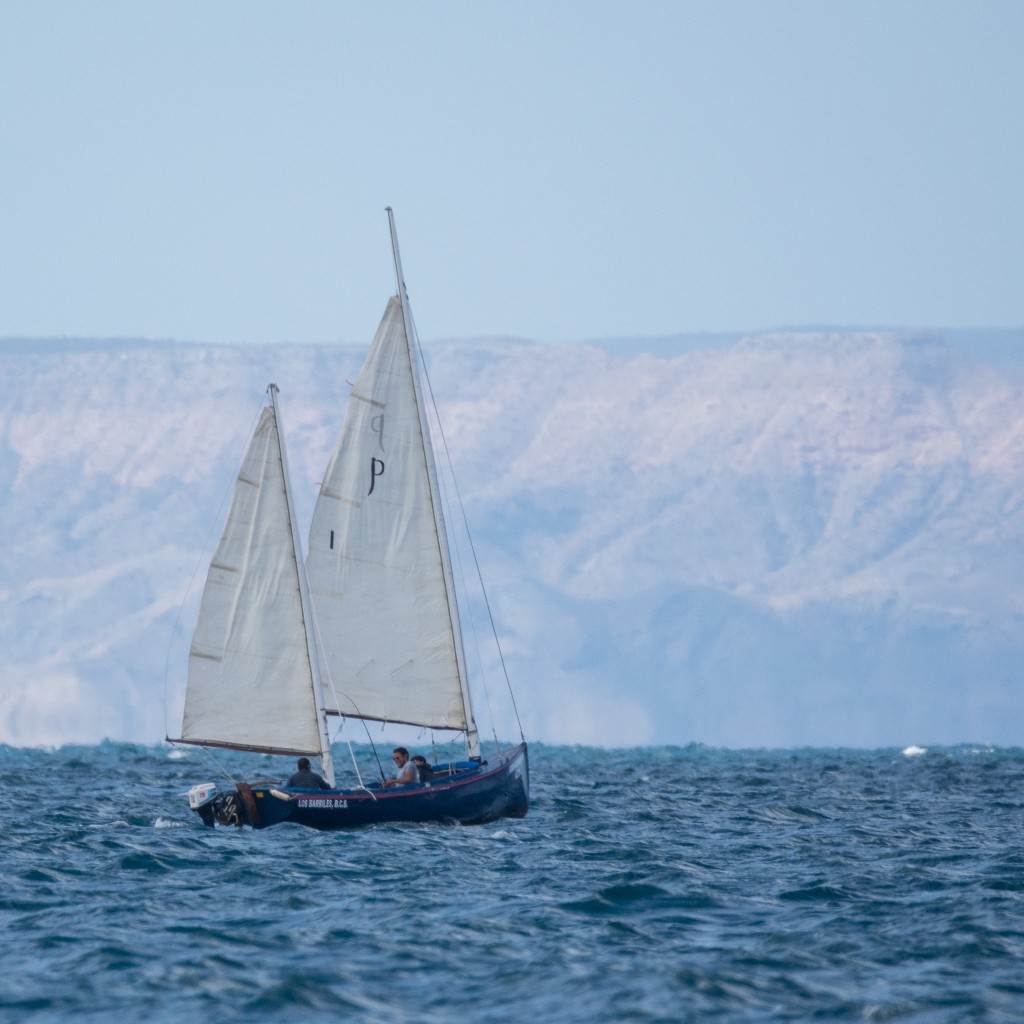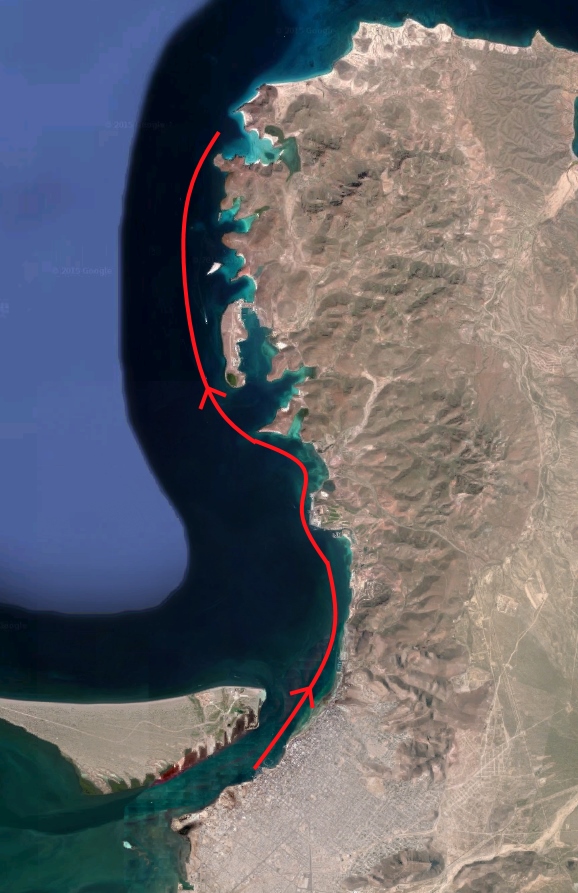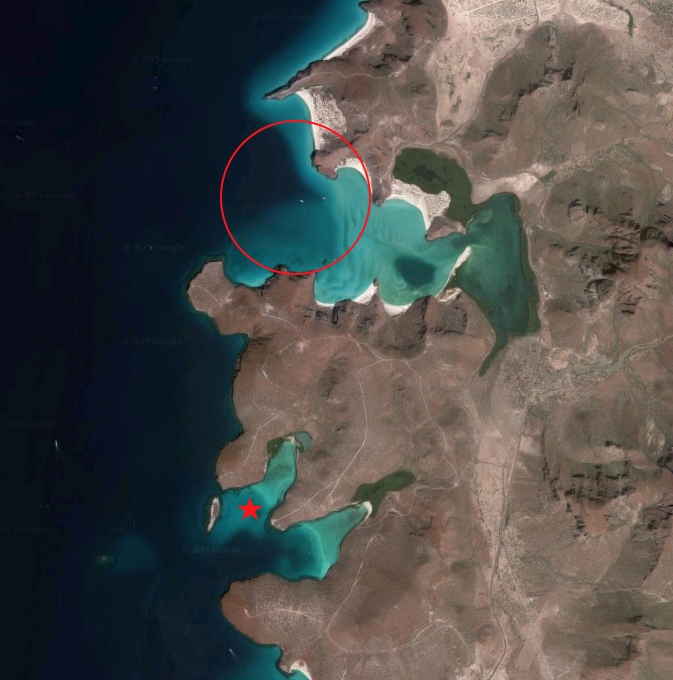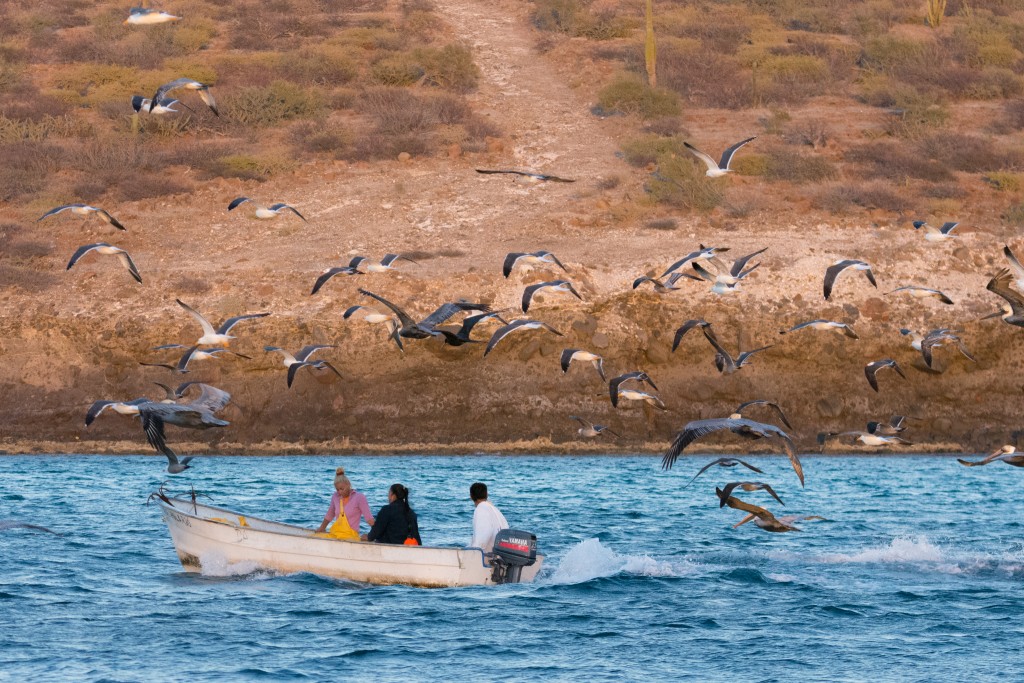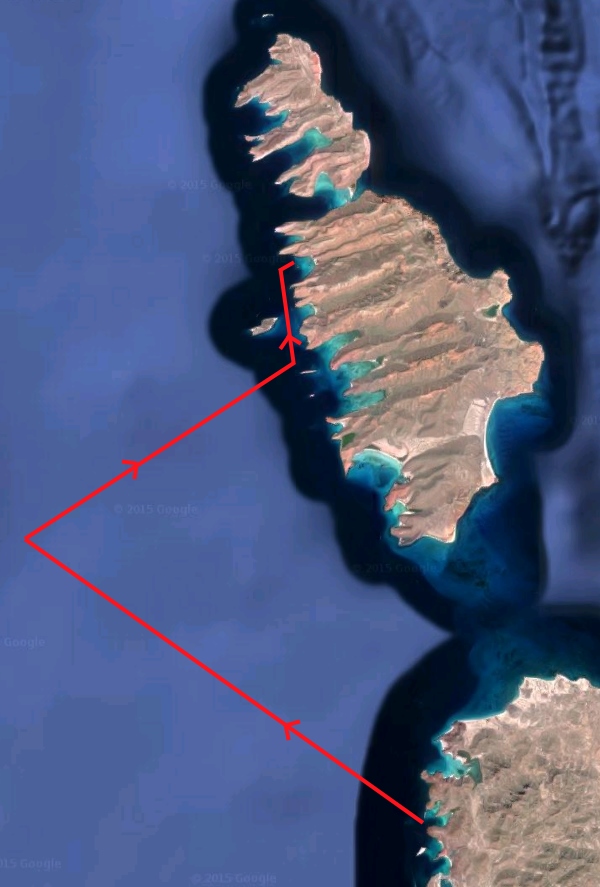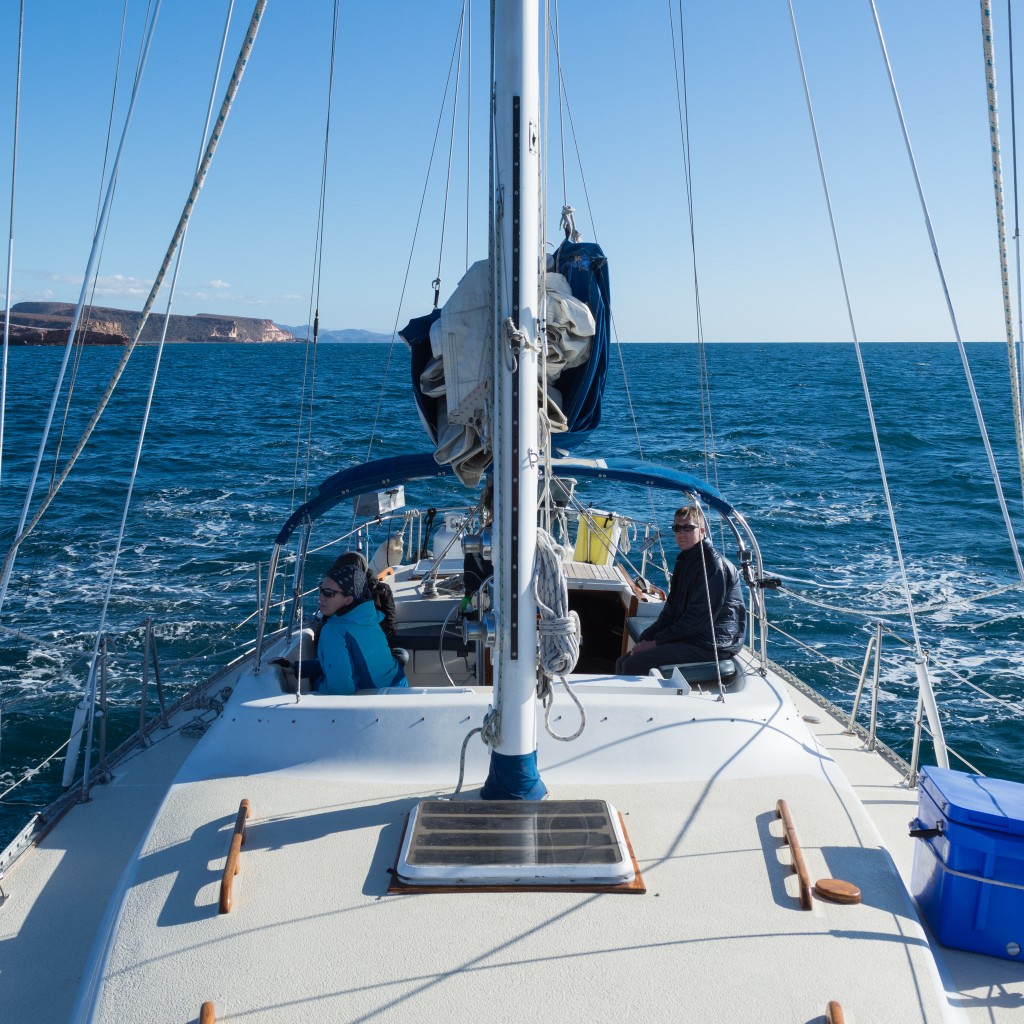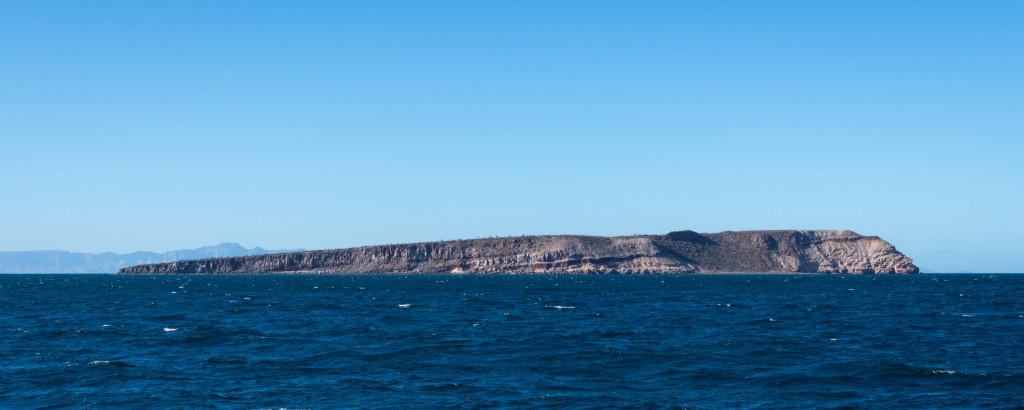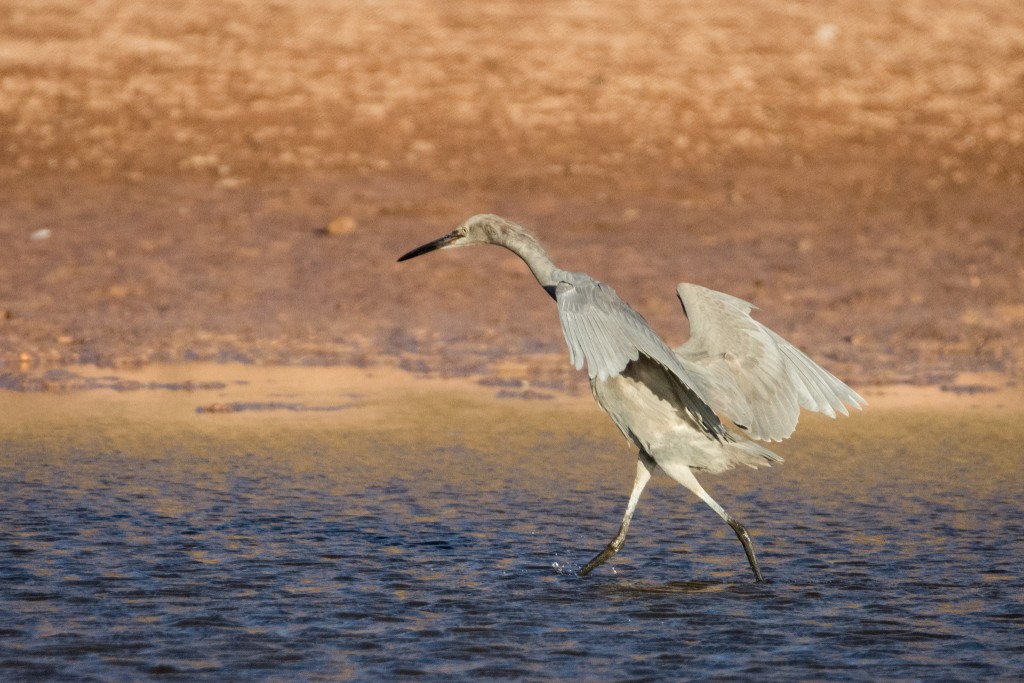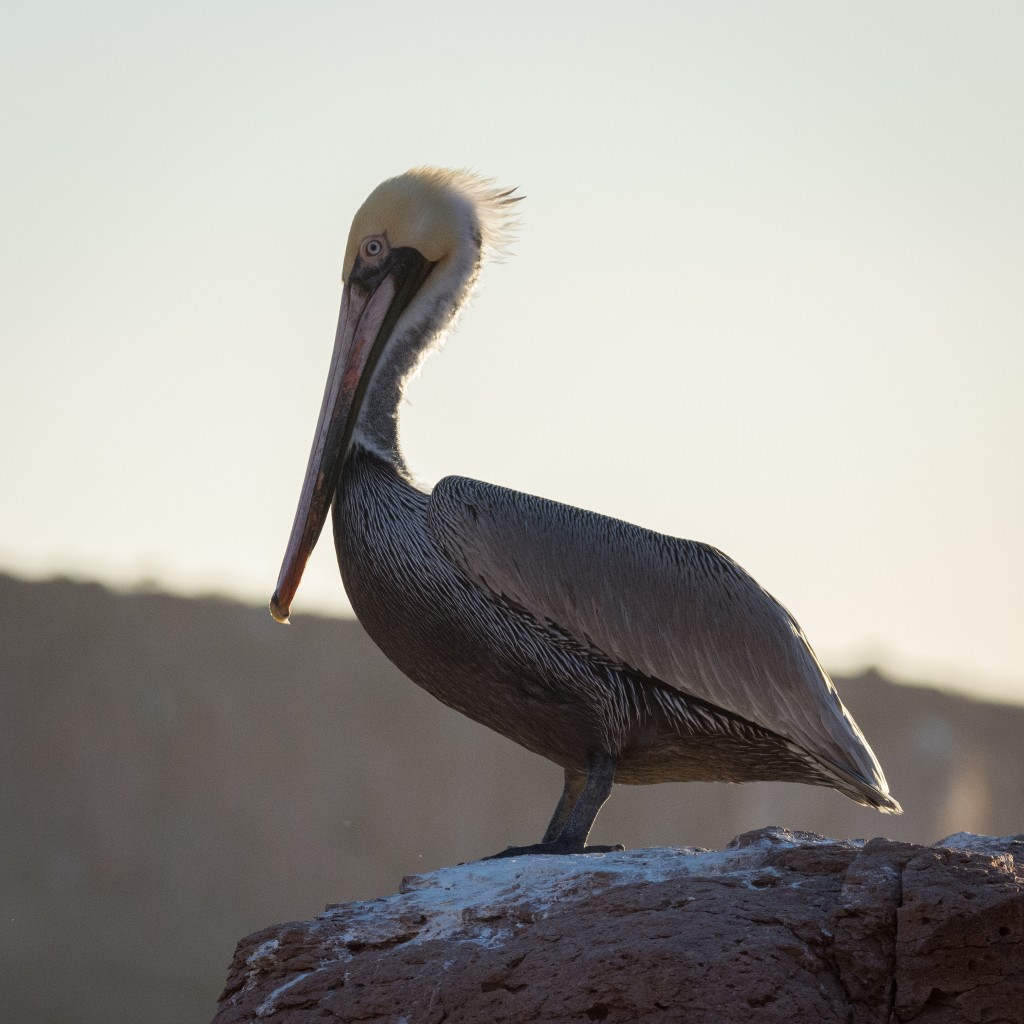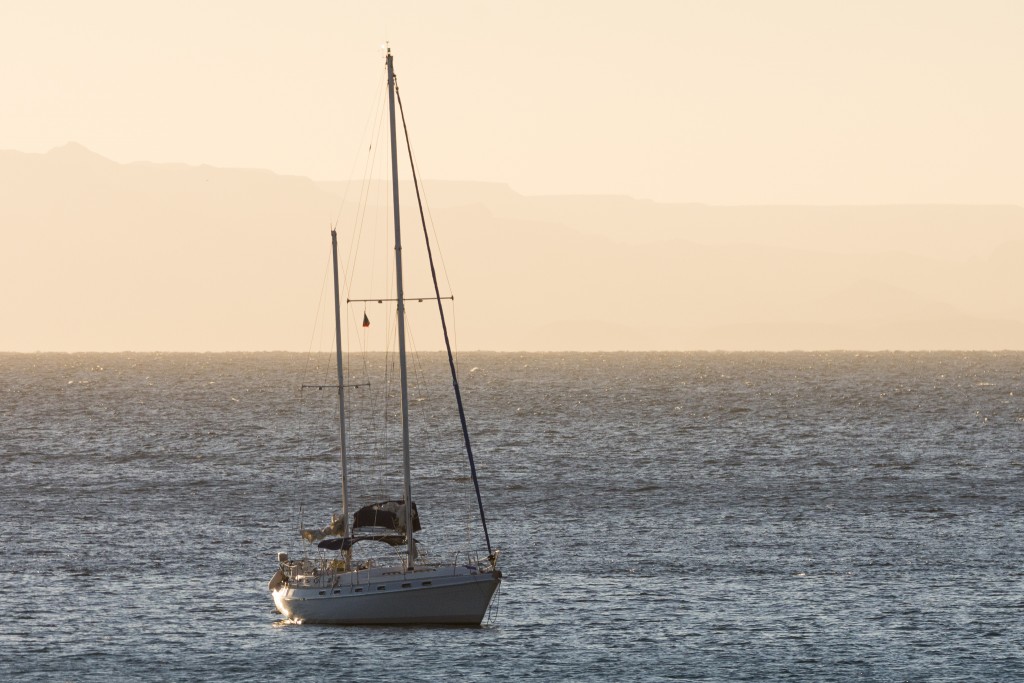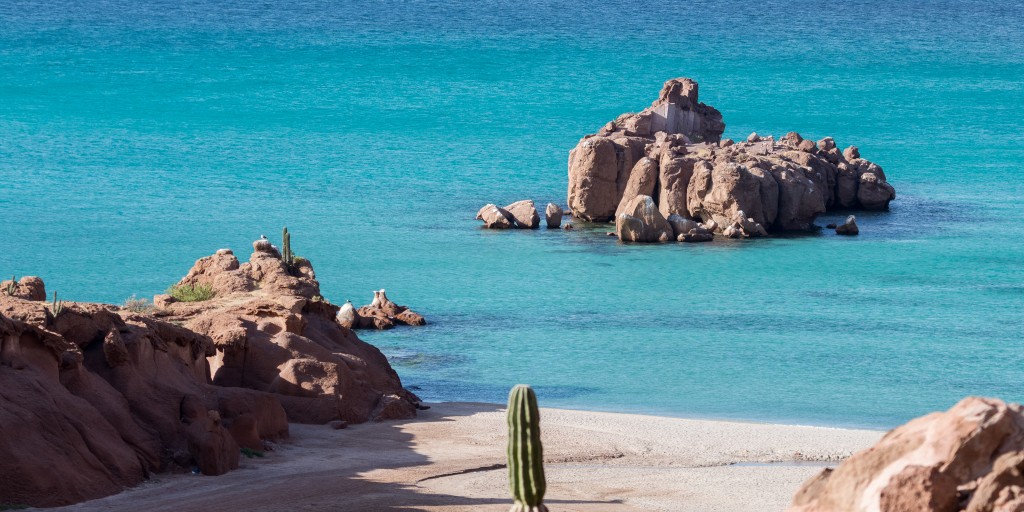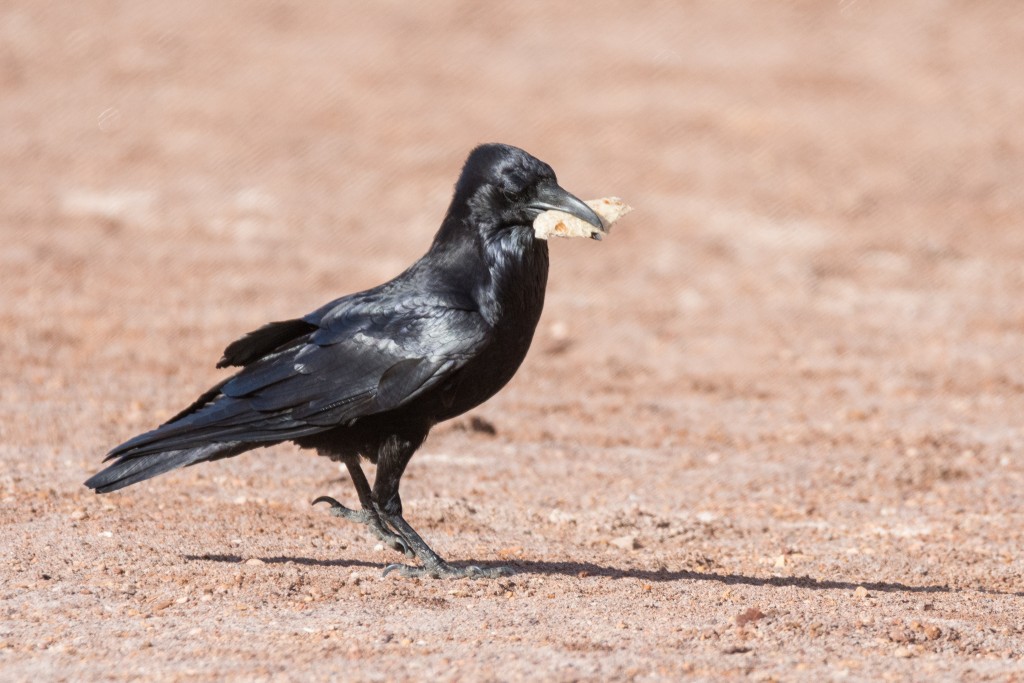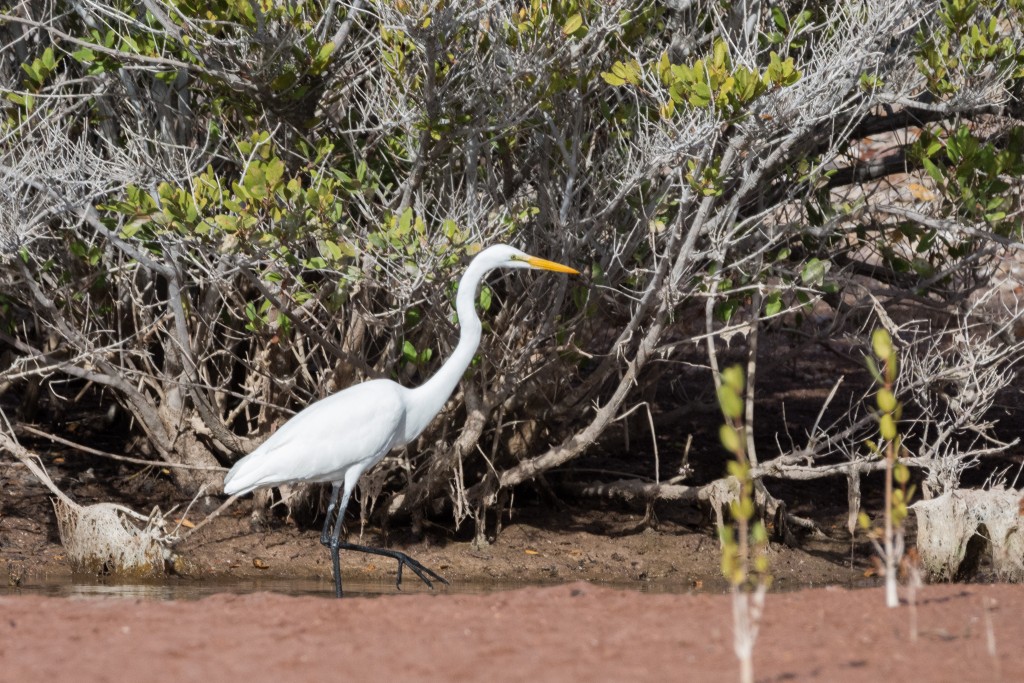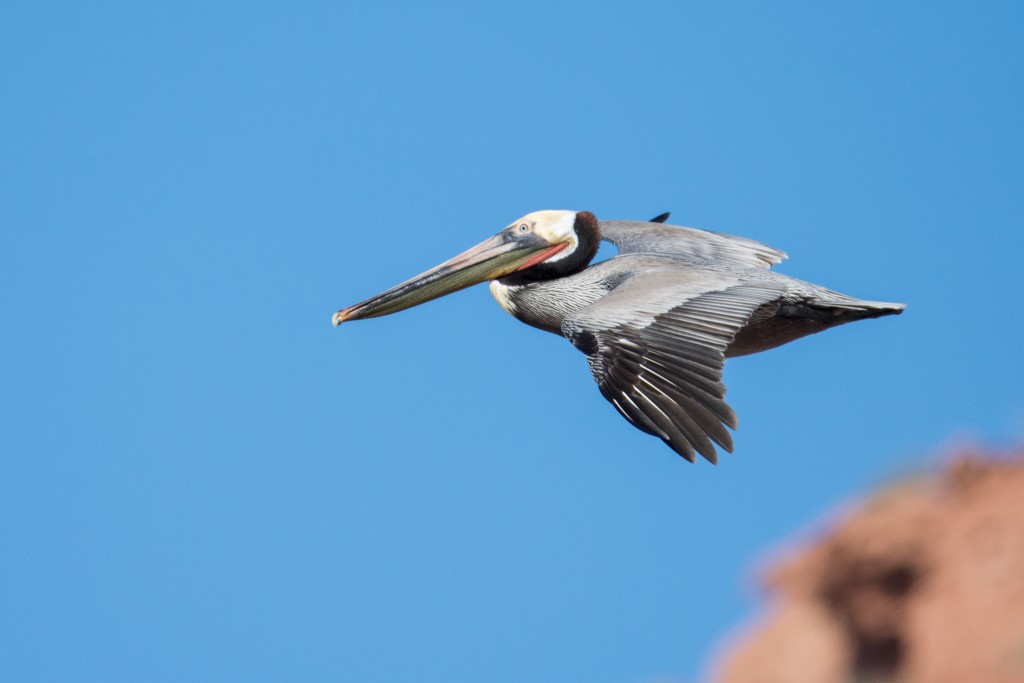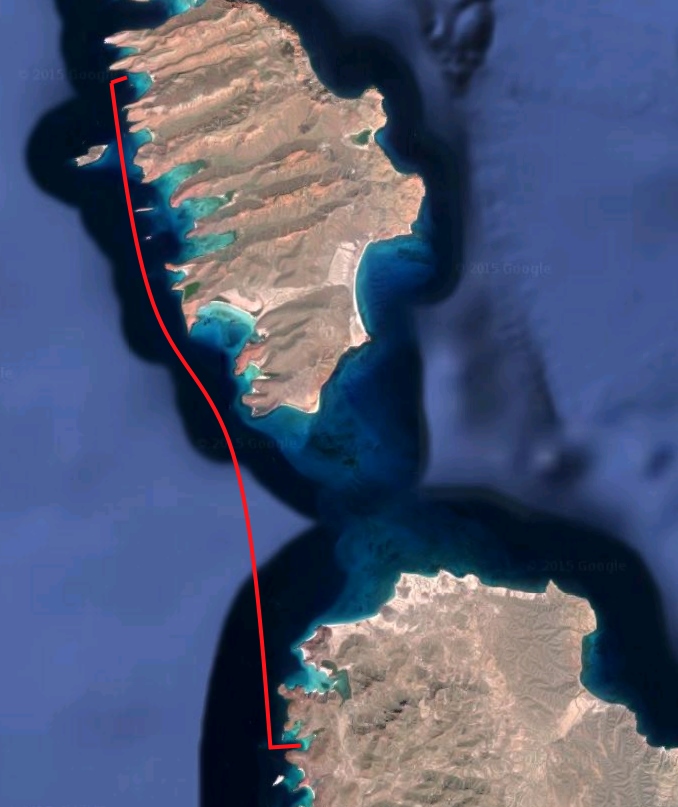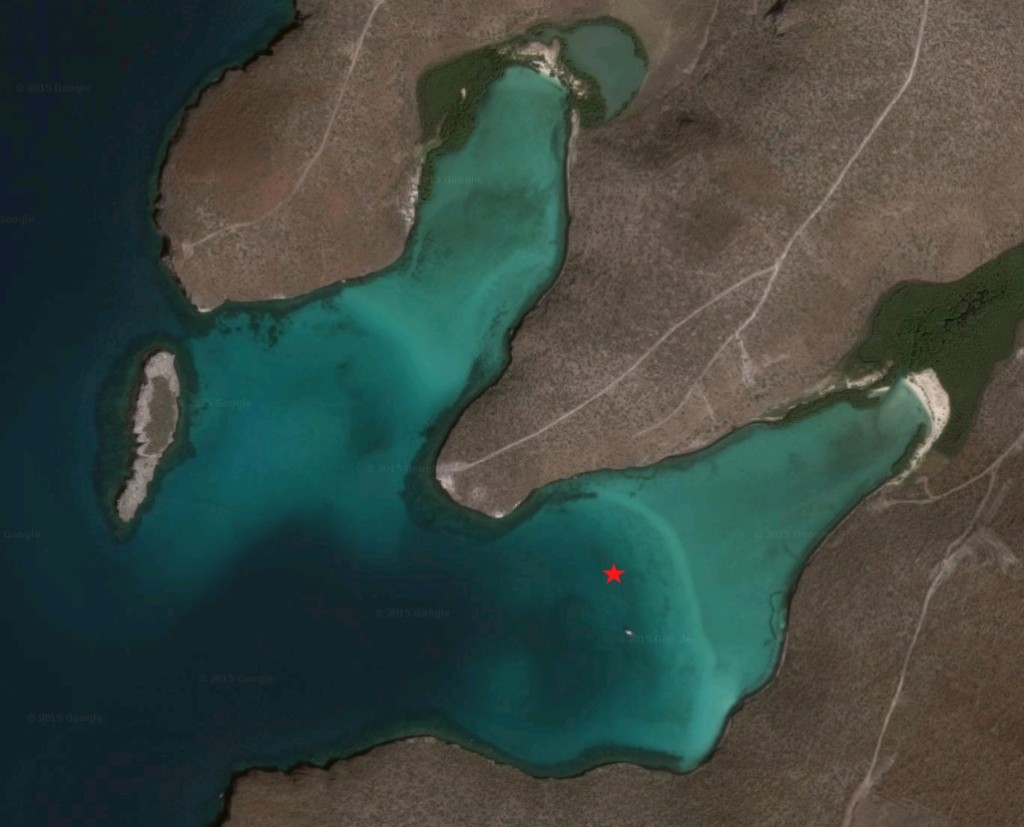Back in November, Davina (one of my closest friends) told me she had a companion fare on Alaska Airlines that she needed to use before it expired. “We should go to the tropics somewhere!” Between looking at airline prices and considering our activity options, one thing turned into another and within a few days we were inviting friends along and talking to charter companies about our bareboat options.
After a few false starts and some last-minute “oh crap, we can’t actually go on this” cancellations, we firmed up our crew list (me, Davina, Emily, Ben, Diana, and Shawna) and found a boat at a cheap price: a 41′ Morgan “Out Island” ketch. It was an older boat, mid-70s (1976 I think), but the price was right and the charter company was happy to help us with transportation to and from the airport. Within a few more days we’d all purchased our tickets to San Jose del Cabo and arranged our ride from the SJD airport up to La Paz, a beautiful coastal city where the sailboat resided in one of La Paz’ marinas.
I’ve been to La Paz once before in May 2014 on s/v Orion, a privately-owned Lagoon 440 catamaran, for my ASA 104 and 114 certifications, so I got in contact with Orion‘s owners. They were more than happy to set up a time to meet with my crew and I, which ended up being breakfast the first morning before we started. Having already seen the area, I was excited to return. But I’m getting ahead of myself! Let’s talk about the plan.
The Plan
Our flights were slated to arrive in SJD on Friday, January 8th. Five of us coming in from Seattle were on the same flight and would arrive at 2pm, with our friend flying in from Denver slated to arrive before us, at 1pm. We’d be picked up by the charter company’s charter captain (Jim) for the two and a half hour drive up to La Paz, then once we arrived in La Paz and unloaded our luggage onto the boat (as well as taken a quick inventory of the kitchen supplies), get dinner and head to the supermarket for an informal provisioning. Unlike the BVI and San Juans trips, I hadn’t planned our meals at all this time, and on purpose! We’d only be out for a few days and I really just wanted to eat lots of things wrapped in delicious flour tortillas.
Saturday morning, we’d do the check-out procedure (going through all the boat systems, talking about quirks of the boat, etc) and head out. I had a vague route in my head, but needed to see the weather (particularly, the wind direction) when we arrived to really get an idea of which anchorages we’d end up using.
That was it! We’d then sail around for a few days and return the boat to La Paz on Tuesday morning.
No Plan Survives Contact With the Enemy
In this case, the enemy is of course the airlines. While our flight from Seattle (with a stopover in San Diego) arrived right on time, our friend flying in from Denver got to sit on a plane on the tarmac for two hours (missing a connection) before being switched to a different flight that would arrive later in the afternoon. This caused a problem, because our ride was on a bit of a timeline, as were we. So… we abandoned him to get to La Paz on his own. Sort of. We’re not monsters! We left detailed instructions on who he should talk to at the airport to get a ride to La Paz, and we were on our way.
The ride to La Paz was beautiful, and I’ve never seen so many birds of prey. Kestrels lining the power lines, one every kilometer or so. The occasional red-tailed hawk. Pair after pair of crested caracaras. Turkey vultures soaring the thermals. It was lovely! Jim provided some great conversation, telling us about the area from the perspective of an ex-pat, talking sailboats, food, and culture.
After we’d gotten our gear aboard SeaScape, Jim dropped us off at a restaurant near the supermarket and went home for the evening. After a tasty meal (I got swordfish covered in mango sauce–a bit sweet for my tastes but good nonetheless) we headed to the grocery store for provisioning. It went pretty quickly between the five of us there, buying lots of tortillas, eggs, cheese, chicken breast, ground beef, various fruits, beer, tequila, and more. After paying, we took the carts out to the taxi stand outside and caught two taxis back to the marina… each pair of people in each taxi thinking our fifth was in the other taxi, a mistake we didn’t notice until after we’d unloaded the groceries from both taxis and paid the taxi drivers! Whoops. Luckily the supermarket wasn’t actually that far away, and our missing crew-member just took a pleasant walk back to the marina. Meanwhile, the friend who’d had to make his own way to La Paz had found the boat and was sitting there when we brought the groceries aboard, so finally we were all together, on the boat, ready to go.
s/v SeaScape – Overview
As this post is really just about the trip itself, I’ve created a second post that is explicitly about SeaScape‘s good and not-so-good qualities. Take a look here.
Saturday, January 9th: Departing La Paz and a rough first day
Saturday morning we met my friends Cathy & Mike of s/v Orion for breakfast at The Dock Cafe, a restaurant near the marina, where almost everybody (except myself and Emily) got huevos rancheros and Mike and I discussed weather conditions and anchorages. At 9am, Davina and I met Jim at the boat for a full overview, which went quickly, and not long after 10am we were ready to go.
From the satellite view (or even the beach!), it looks like La Paz has big open stretches of water out front of it. The reality isn’t quite as simple, and leaving La Paz you’ve got to follow the rather narrow channel along the shoreline for several kilometers. What looks like big patches of open water is actually very shallow sandbars, too shallow for even SeaScape‘s 6ft/2m keel, so we chugged along on the engine, heading into the stiff northerly winds along the coast. The channel finally ends when you pass the PEMEX plant just north of La Paz, with boats leaving the channel passing not far in front of the bow (and enormous anchor chain!) of the tanker ship sitting in front of the plant.
Our first destination was a bay north of La Paz that we weren’t planning on sleeping at, but instead doing some snorkeling before heading into our night anchorage. We were heading directly into the wind and didn’t really have the extra time that day to tack back and forth to get up there, so we remained on engines. Unfortunately, the ride was fairly rough, and for the third time in my life, I got seasick. I was ok while I was on helm, but going below was out of the question.
The bay, unfortunately, was completely exposed to the north, and after two half-hearted attempts to anchor we gave up. Even had we given it enough effort to get solid purchase with the anchor, the wind was strong enough and the water rough enough we wouldn’t have been able to enjoy ourselves either, so we headed to our planned night anchorage instead.
Without length markers on the anchor chain it took us two attempts to get a solid hold, but we eventually did, and I was able to lay down to try and start feeling better–at this point I was feeling just awful, and laying down on my back was the only way to feel better.
Seasickness is awful. I’m not particularly prone to it, but I got it this time nonetheless. When you’re seasick, the majority of what you can think about is how shitty you feel. The world contracts around you, centering around your unstable gut, the wrong motions, positions, or smells only serving to make you sicker. Worse, you’re stuck on the exact thing making you sick: the boat. Seasickness makes you start second-guessing all your life choices that have brought you to this point, and all your future plans involving boats at all: What is wrong with me? Do I really like boats at all? What if this is how I’ll feel on boats forever from this point? Maybe I should never sail again and just stick to land.
Fortunately, I’ve been through it before (though never as severely) and I’ve been warned by more experienced mariners that all of those things would be going through my head. So I kept it to myself and did my best to not move and not make myself feel worse. I needed to get hydrated and get some more salts in me, particularly after I threw up on our not-so-successful attempt to all head to shore on the dinghy (we couldn’t get the dinghy engine running, for reasons I’d figure out the next morning, and I’ve mentioned in the boat overview). Lime wedges with salt poured over them helped do the trick. They tasted nasty, but the citric acid (and some swallows of water) helped me get it down, and within a half hour I was able to get up and join my crew in the salon for dinner, though I couldn’t eat much more than a plain tortilla.
That night, though, was rough for everybody. Despite being in a somewhat protected anchorage, the wind was strong enough and the waves outside the bay big enough that we spent the night rolling back and forth. Most of us didn’t sleep very well at all–I spent most of the night being kept awake by the rough rolling of the boat and the wind howling through our rigging. The rolling came from waves refracting around the island that was (to some extent) protecting us from the wind and waves.
Sunday, January 10th: Tacking upwind in rough waters
Sunday was a long, tough day of sailing. With strong (15-20 knot) northerly winds, and our route taking us directly north along the western coast of Isla Espiritu Santo, we tacked out into the open Bay of La Paz on a close reach. I’d like to say we were close hauled, but between small wind shifts and the steering on SeaScape being best described as “numb”, I was able to balance the boat out on a close reach so we didn’t have to touch the wheel too much (the boat had no autopilot system).
Just because the boat was balanced didn’t mean it was a comfortable ride. Several of us were still feeling the effects of seasickness (I’d had it the worst by far, but most of us were feeling some minor nausea on Sunday, especially if we spent any time below-decks), and the rough seas didn’t help. Worse, the refrigerator aboard didn’t have a very sturdy latch on the door and at one point the door flew open, and the bottle of rum that had been stashed inside flew out and shattered (among other items that flew out). Ben and I were able to clean the mess, but it wasn’t easy: being below decks with the pervasive alcohol smell only made the nausea worse, so we had to take a few breaks above for fresh air.
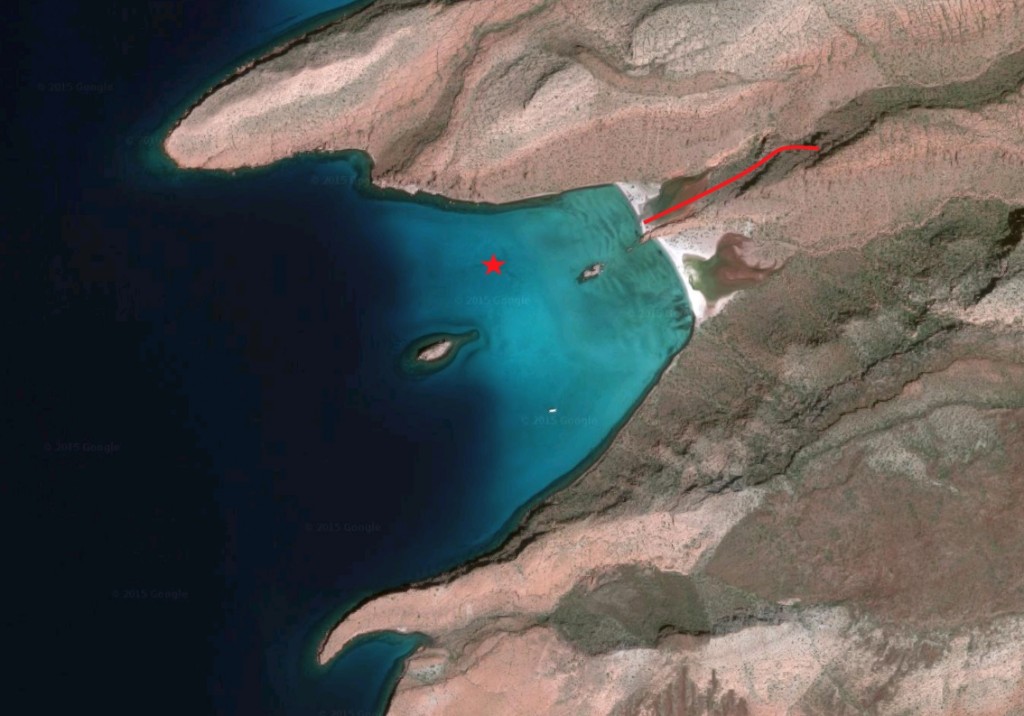
Anchorage at Isla Espiritu Santo on the second night. Red line is the hiking path we took the next morning.
After a tack back toward the island (which I’ll admit turned into an intentional jibe because the heavy wind in the jib and rough waters wouldn’t let us tack across the wind!) we spent another rough hour and a half until finally I turned us directly into the wind and we took down the sails. It was that or another two long tacks, and we were tired and beaten up by the waves, so engines it was. An hour later we finally dropped anchor in a beautiful bay and had a relatively calm boat. The first thing we did after celebration beers and a snack was to all pile aboard the dinghy and head to shore.
There were a bunch of tents ashore, presumably for tourists, with a few caretakers hanging out there as well. Aside from a brief hola, amigos, we all kept to ourselves.
These desert islands are beautiful, with various rock strata in the cliffs and lots of scrub plants, small trees, and cactus all over the place. Pelicans, egrets, herons, and various gulls, populated the cove along with a pair of ravens, while turkey vultures and red-tailed hawks soared overhead and perched on the cliffs. This is what sailing is all about for me: seeing places I’d otherwise never get to see. Suddenly all the misery of the past day was worth it once more.
We spent the evening with dinner, card games, and looking up at the amazing star field with nearly no light pollution at all in the sky.
Monday, January 11th: Smooth sailing on a run
Despite being in a fairly protected anchorage, the wind howled down through the canyon all night long, rattling lines against the mast and whistling through the rigging, causing the boat to rock unevenly and unpredictably. Some of us slept better than others, but the morning was rather pleasant. After a quick snack we all headed ashore for the short, half-kilometer hike with marked trail and informational signs.
Breakfast back aboard then consisted of a big veggie and bacon scramble with tortillas, and we relaxed and cleaned for a while before pulling anchor and heading south. Our destination for the afternoon was back at the anchorage we’d used the first night, though with the plan to anchor in a different part of the cove. The same northerlies we’d fought our way through now were at our backs, so we flew the jib and kept the main and mizzen furled. With both the waves and the wind at our backs, we surfed the waves and enjoyed the warm air, averaging over 5 knots over ground the entire way.
Anchoring in a different part of the cove, further back, gave us a much calmer evening, and my first really solid night of sleep of the trip.
Tuesday, January 12th: Heading home
Our last day also happened to be my 32nd birthday. Not a bad way to start the year, is it? We pulled anchor in the morning while making scrambled eggs and began heading south along the coast back into La Paz. There’s not much to talk about here, as we needed to be on engines the entire time through the channel back into La Paz, but it was a very pretty morning, and we docked easily. Less than an hour after docking, we’d cleared the boat out and loaded our bags back into the van, on our way down to San Jose del Cabo.
On the way, Jim took us to a little restaurant-in-a-residence where a Mexican grandmother made us coffee and a big scramble with chorizo (we could see the chickens that’d laid the eggs in a pen across the yard!) and homemade tortillas, all cooked over a mesquite fire. Everybody else can have all the cake they like, this was the perfect birthday meal for me. I devoured the entire plate of food.
We spent the rest of the afternoon in airports and airplanes, but my head was consumed with reflecting on the trip and in the novels I was reading.

